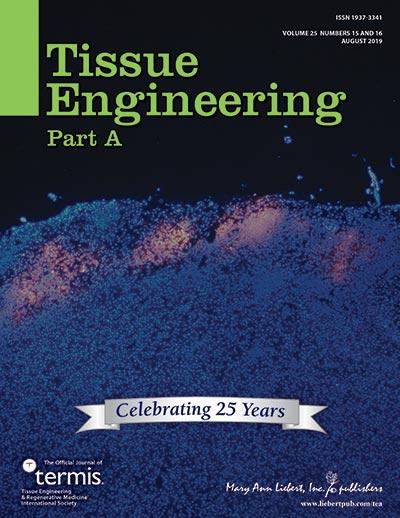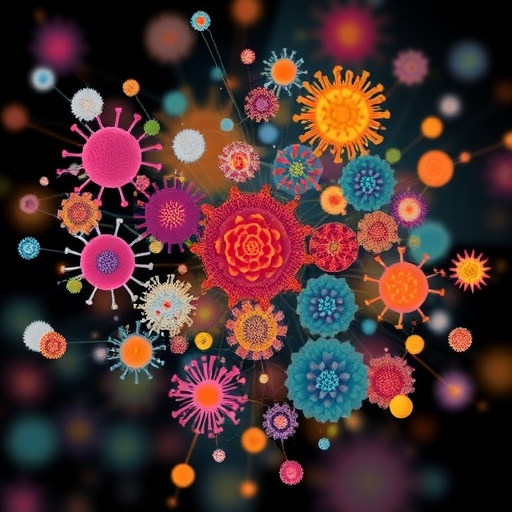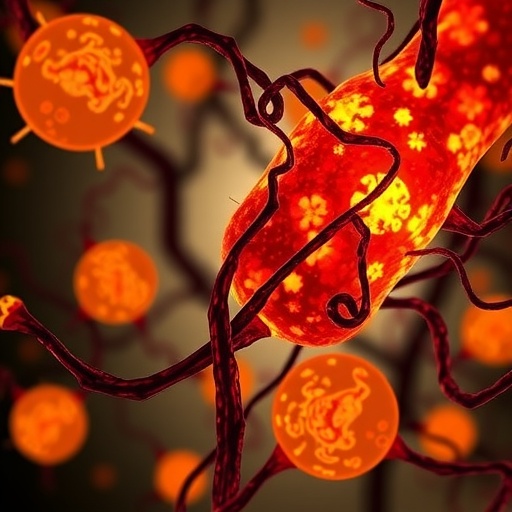
Credit: Mary Ann Liebert, Inc., publishers
New Rochelle, NY, September 19, 2019-Mast cells are critically involved in immunity and immune disorders. However, they are rarely cultured ex vivo for experimental manipulation because of the difficulty in isolating useful numbers and limitations related to 2D culture. A new study reports the successful development of authenticated mast cells by culturing hematopoietic stem cells in an engineered 3D connective tissue matrix. The work is published in Tissue Engineering, a peer-reviewed journal from Mary Ann Liebert, Inc., publishers. Click here to read the article for free on the Tissue Engineering website through October 19, 2019.
Heather Gappa-Fahlenkamp, PhD, School of Chemical Engineering, Oklahoma State University, OK, with other colleagues from OSU present their work in an article titled “Human Mast Cell Development from Hematopoietic Stem Cells in a Connective Tissue-Equivalent Model.” In an attempt to recapitulate the native environment, the authors isolated mast cell progenitors and co-cultured them with human primary fibroblasts in a 3D collagen matrix; the matrix was then coated with type IV collagen and fibronectin, and endothelial cells were seeded to stimulate further mast cell development. Several characteristics of cell morphology and phenotypic marker expression were assessed to validate typical mast cell immune-related behavior, demonstrating the success of this technique.
“The authors present a successful complex tissue model for studying mast cell progenitors and mast cell development,” says Tissue Engineering Co-Editor-in-Chief Antonios G. Mikos, PhD, Louis Calder Professor at Rice University, Houston, TX. “Not only will this model prove useful in understanding mast cell biology, but it may also be a rich testing ground for future therapies and drug discovery involving mast cells, inflammatory disorders, and allergic diseases.”
###
About the Journal
Tissue Engineering is an authoritative peer-reviewed journal published monthly online and in print in three parts: Part A, the flagship journal published 24 times per year; Part B: Reviews, published bimonthly, and Part C: Methods, published 12 times per year. Led by Co-Editors-in-Chief Antonios G. Mikos, PhD, Louis Calder Professor at Rice University, Houston, TX, and John P. Fisher, PhD, Fischell Family Distinguished Professor & Department Chair, and Director of the NIH Center for Engineering Complex Tissues at the University of Maryland, the Journal brings together scientific and medical experts in the fields of biomedical engineering, material science, molecular and cellular biology, and genetic engineering. Leadership of Tissue Engineering Parts B (Reviews) and Part C (Methods) is provided by Katja Schenke-Layland, PhD, Eberhard Karls University, Tübingen, Heungsoo Shin, PhD, Hanyang University; and John A. Jansen, DDS, PhD, Radboud University, and Xiumei Wang, PhD, Tsinghua University respectively. Tissue Engineering is the official journal of the Tissue Engineering & Regenerative Medicine International Society (TERMIS). Complete tables of content and a sample issue may be viewed on the Tissue Engineering website.
About the Publisher
Mary Ann Liebert, Inc., publishers is a privately held, fully integrated media company known for establishing authoritative peer-reviewed journals in many promising areas of science and biomedical research, including Stem Cells and Development, Human Gene Therapy, and Advances in Wound Care. Its biotechnology trade magazine, GEN (Genetic Engineering & Biotechnology News), was the first in its field and is today the industry’s most widely read publication worldwide. A complete list of the firm’s 80 journals, books, and newsmagazines is available on the Mary Ann Liebert, Inc., publishers website.
Media Contact
Kathryn Ryan
[email protected]
Original Source
https:/
Related Journal Article
http://dx.




